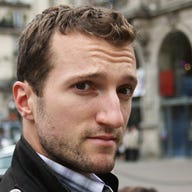Fake Paris project revisited after decades of obscurity

PARIS – Le Figaro newspaper this month released archived plans of a fake Paris designed as a diversion during World War I. The plans, originally appearing in The London Illustrated Newsin 1920 were unearthed to shed some new light on this little known project of urban innovation.
Paris has been a frontrunner in dynamic urban planning through the ages. In the latter half the 19th century, Napoleon III and his engineer Eugène Haussman famously tore down entire swatches of homes to create the trademark Parisian boulevards and parks today. More recently, in 2009 President Nicolas Sarkozy has moved forward wit his project entitled Grand Paris to increase tourism and transit systems outside of Paris.
During World War I, fear of German air bombings prompted the government to alter the urban landscape in an entirely different way. Essentially, it had to create dummy sites around Paris in the near suburbs to lure German bombers away from the densely populated French capital.
According to the documents, Fernand Jacopozzi, the Italian engineer who designed lighting systems for the Eiffel Tower and the Champs Elysées, stepped in to create the fake neighborhoods and industrial centers. He relied on carefully lit landscapes to recreate Parisian landmarks to divert nighttime bombings.
For example, using wooden buildings with canvas roofs, Jacopozzi recreated lighting that would have been similar to that of a dirty glass-roofed factory. In addition to an imitation Gare de l’Est train station and fake Champs Elysées, the design included all sorts of variations and colors of lights to convince nocturnal German bombers, in an age before radar, that they were in fact targeting Paris. According to the plans, it was "a 'city' created to be bombarded."
Most of thee fake sites were completed after the last raids on Paris in 1918 and thus never tested. This project went largely unnoticed by those who focus on Parisian history. Tour director for Oui Paris Tours, Tyler Arcaro, said this is the first time he heard about the sham city. “I am not surprised that this story has finally seen the light of the day, but I am always intrigued when new facts and information finally unearth themselves decades, sometimes centuries later,” he said.
With over 2500 years of Parisian history to cover, Arcaro researches history and culture to share with his clients, but he believes many secrets are still to be discovered. “And for as well-documented and visited as Paris is, we constantly learn new things about her,” he said.
Photo: Europe 1
This post was originally published on Smartplanet.com
